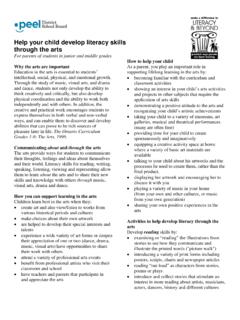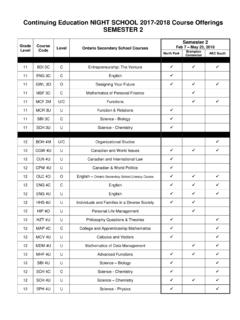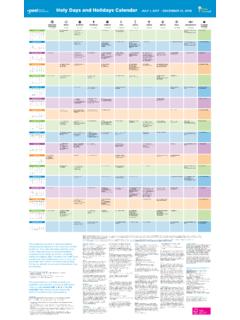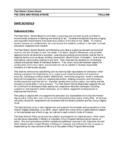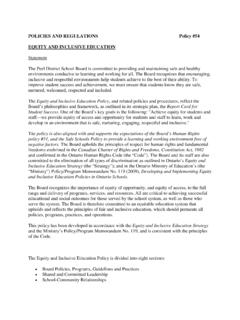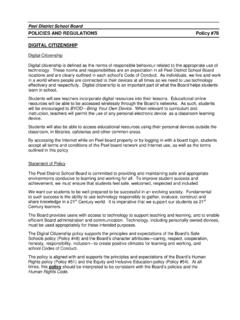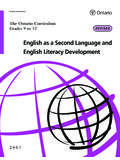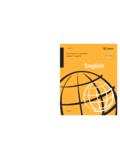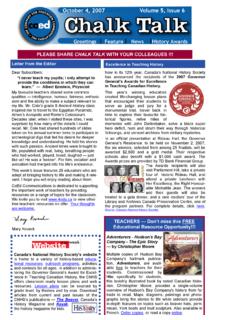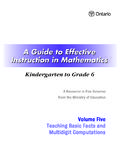Transcription of Curriculum, Instruction and Special Education …
1 Gifted Education Program Review Executive Summary Assessment and Accountability curriculum , Instruction and Special Education support Services putting research into practice Elana Gray, , Paul Favaro, May 2009 Peel District School Board Rebecca Crouse Debra Krutila Chuck Waterman Superintendents curriculum , Instruction and Special Education support Services Alternative Programs Assessment and Accountability Department Kim Bennett Assessment and Accountability Officer Rosanne Brown Assessment and Accountability Officer Marti Carpenter Testing/Assessment Technician Lisa Durocher Assessment and Accountability Research Coordinator Paul Favaro Chief of Assessment and Accountability Pat Hare Assessment and Accountability Secretary Tom Lam Assessment and Accountability Analyst Sumbal Malik Research and Community Coordinator UEY.
2 Malton Aimee Wolanski Assessment and Accountability Officer Gifted Education Program Review Executive Summary PPrrooggrraamm DDeessccrriippttiioonn The Peel District School Board provides gifted Education programming to students in elementary and secondary schools. At the elementary level, the Program includes two distinct service delivery models designed for students identified as Exceptional Intellectual-Gifted: (1) In-School Enhanced Learning Program (ISELP) and (2) contained Enhanced Learning Classes (ELCs). At the secondary level, specific subjects across grade levels are offered that extend and enhance the curriculum .
3 As part of the identification and placement process, an Identification, Placement and Review Committee (IPRC) considers the student s intellectual ability using the results of standardized educational assessments, a teacher nomination checklist, student achievement, and adaptive behaviour. Identification and placement decisions are reviewed annually (Ontario Ministry of Education , 2007). PPrrooggrraamm RReevviieeww AApppprrooaacchh Purpose The purpose of this review was to identify current issues in Gifted Education through a literature review, and to document models of gifted Education identification and programming procedures within school boards across Ontario.
4 The review also examined Peel s service delivery model, and obtained perceptions of key stakeholders regarding the Gifted Education Program. The information obtained in this review will help to illuminate program strengths and challenges and assist with the future planning and improvement of Peel s Gifted Education Program. Project Steering Committee During the 2006-2007 school year, a Gifted Education Program Review Steering Committee was formed, involving representatives from curriculum , Instruction , Special Education , and Alternative Programs support Services, the Assessment and Accountability Department, school administrators, representatives from the Association for Bright Children of Ontario (ABC Ontario) and an external researcher.
5 The steering committee developed the Terms of Reference for the project. Gifted Education Program Review Executive Summary 1 Assessment and Accountability curriculum , Instruction and Special Education support Services May 2009 Methodology The research design for the Gifted Education Program Review included a mixed method approach (Green, 2007) using a range of quantitative and qualitative data methods: (a) literature review; (b) record reviews; (c) telephone interviews with school boards across Ontario; (d) survey data from key program stakeholders - students, teachers, administrators, and parents; and (e) focus groups with administrators, Special Education Resources Teachers and Psychoeducational Consultants.
6 The following questions were used to direct the Gifted Education Program Review: 1. What does the literature say about Gifted Education ? 2. What does the Gifted Education Program look like in school boards across Ontario? 3. What is the Gifted Education Program service delivery model in Peel (historical and present)? 4. What are the perceptions of key stakeholders regarding Peel s Gifted Education Program? Participation Fourteen school boards across Ontario participated in the telephone interview. A total of 1194 elementary students (787 students in the ISELP and 407 students in ELCs) and 822 secondary students in the Regional Enhanced Learning Program completed the student survey; 154 elementary teachers and 52 secondary teachers completed the teacher survey; and 109 elementary administrators completed the administrator survey.
7 A total of 1091 parents of students in the Gifted Education Program (713 parents of elementary students and 378 parents of secondary students) completed the parent survey. Focus group participants included four secondary administrators of Regional Gifted Centers, 17 Special Education Resource Teachers, and four Psychoeducational Consultants. RReessuullttss Current Issues Regarding Gifted Education in the Research Literature Over the past several years, the concept of giftedness has changed from a uni-dimensional viewpoint (based on IQ scores), to a multi-dimensional perspective emphasizing a variety of characteristics, abilities, affinities, and motivations (Senate Select Committee Report, 1988).
8 Various models of giftedness have emerged in the literature [ , Sternberg s Triarchic Model of Giftedness (Sternberg, 1997), Renzulli s Three-Ring Conception of Giftedness (Renzulli, 2005)], and have inspired educational specialists to advocate for gifted Education , programming, and curriculum . The literature emphasizes that it is important for educators to continue to explore, understand and appreciate the multi-dimensional nature of giftedness and intelligence; and that accurate identification, enhanced curriculum , and appropriate programming can impact on the success of children identified as gifted.
9 The identification process is viewed as a critical step in the process of ensuring that students who need gifted Education are recognized and matched with appropriate educational programs. Researchers suggest Gifted Education Program Review Executive Summary 2 Assessment and Accountability curriculum , Instruction and Special Education support Services May 2009 that the best identification procedures rely on a multi-dimensional approach by obtaining multiple types of information ( , intellectual ability, academic achievement, interests, creative thinking, motivation, leadership skills), from a variety of sources (objective and subjective assessments) (British Columbia Ministry of Education , 2001; Coleman, 2003.)
10 New South Wales Association for Gifted and Talented Children Inc., 2004; Ralph, 1996; Rogers, 2002). In addition, the literature emphasizes that the goals of the Gifted Education Program should set the direction for the identification process and that the data collected for identification must be matched with the types of services and activities being provided (Coleman, 2003). Underrepresentation of gifted students is recognized in the research literature as a challenge. Gifted children can be found in every level of society and cultural group, however students from specific groups have been underrepresented in gifted programs ( , ethnic or racial groups, students who are economically disadvantaged, students with limited English proficiency, and students with physical disabilities) (Castellano, 2003, cited in Coleman, 2003; Fraser, Garcia, & Passow, 1995).
